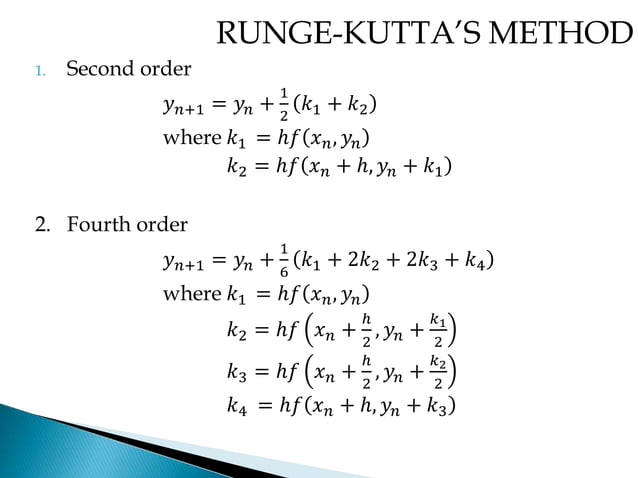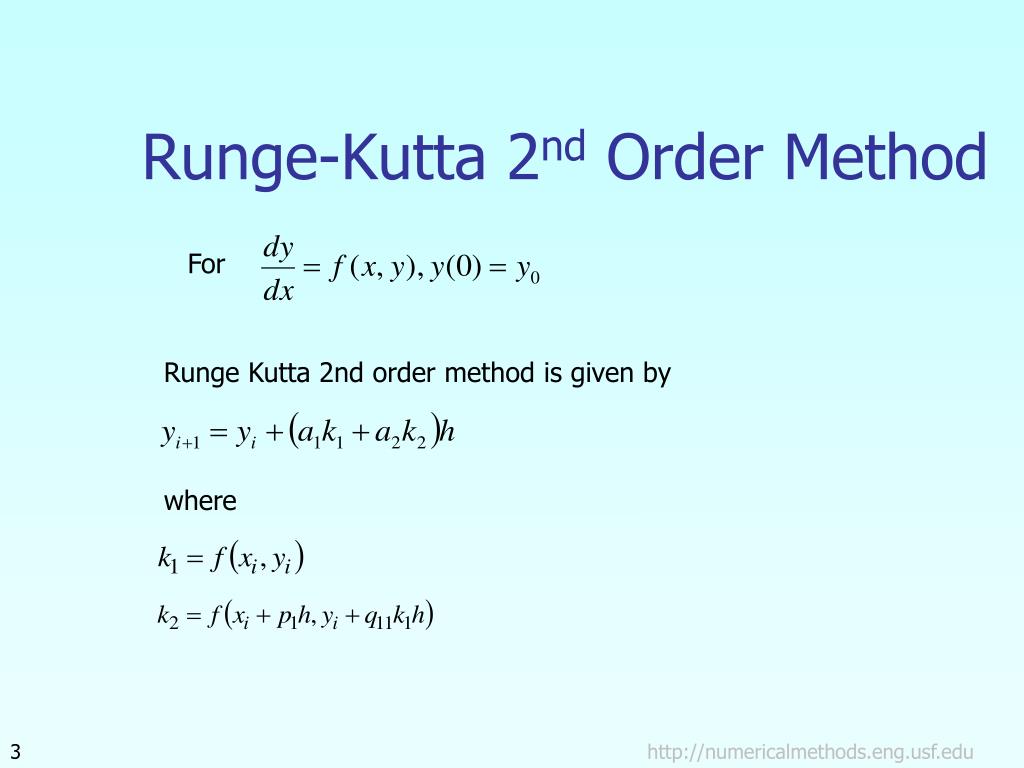Runge Kutta Presentation
| Introduction to Runge-Kutta | ||
|---|---|---|
| Runge-Kutta is a numerical method used to solve ordinary differential equations (ODEs). It was developed by Carl Runge and Martin Wilhelm Kutta in the early 20th century. Runge-Kutta is widely used in various fields, including physics, engineering, and computer science. | ||
| 1 | ||
| How does Runge-Kutta work? | ||
|---|---|---|
| Runge-Kutta approximates the solution of an ODE by advancing the solution in small intervals. It calculates the derivative of the function at different points within each interval to improve accuracy. The method uses weighted averages of these derivatives to estimate the next value of the solution. | ||
| 2 | ||
| The Four Stages of Runge-Kutta | ||
|---|---|---|
| Runge-Kutta typically involves four stages or steps in each interval. In each stage, the method calculates intermediate values based on the function's derivative. These intermediate values are then combined to approximate the solution at the next time step. | ||
| 3 | ||
| The Advantages of Runge-Kutta | ||
|---|---|---|
| Runge-Kutta is a highly accurate numerical method for solving ODEs. It provides better accuracy than simpler methods like Euler's method. Runge-Kutta is also more stable and reliable, especially for stiff ODEs. | ||
| 4 | ||
| Common Variants of Runge-Kutta | ||
|---|---|---|
| There are several variants of the basic Runge-Kutta method, such as the second-order method (RK2) and the fourth-order method (RK4). Each variant has different levels of accuracy and computational complexity. The choice of variant depends on the specific problem and the trade-off between accuracy and efficiency. | ||
| 5 | ||
| Applications of Runge-Kutta | ||
|---|---|---|
| Runge-Kutta is used in various scientific and engineering simulations, such as modeling population dynamics, chemical reactions, and celestial mechanics. It is also used in computer graphics and animation to simulate motion and physics-based effects. Runge-Kutta is an essential tool in numerical analysis and scientific computing. | ||
| 6 | ||
| Limitations of Runge-Kutta | ||
|---|---|---|
| Runge-Kutta can be computationally expensive for large systems of ODEs or problems with high-dimensional state spaces. It may require a significant amount of memory and computational resources. The accuracy of Runge-Kutta can be affected by the step size and the smoothness of the function being approximated. | ||
| 7 | ||
| Tips for Using Runge-Kutta | ||
|---|---|---|
| Choose the appropriate variant of Runge-Kutta based on the problem's requirements and constraints. Experiment with different step sizes to balance accuracy and computational cost. Consider using adaptive step size control techniques to automatically adjust the step size during the simulation. | ||
| 8 | ||
| Conclusion | ||
|---|---|---|
| Runge-Kutta is a powerful numerical method for solving ordinary differential equations. It offers high accuracy and stability, making it suitable for a wide range of applications. By understanding the principles and variants of Runge-Kutta, you can effectively apply it to solve complex ODE problems. | ||
| 9 | ||
| References (download PPTX file for details) | ||
|---|---|---|
| List any references used in the presentation ... Your second bullet... Your third bullet... |  | |
| 10 | ||






